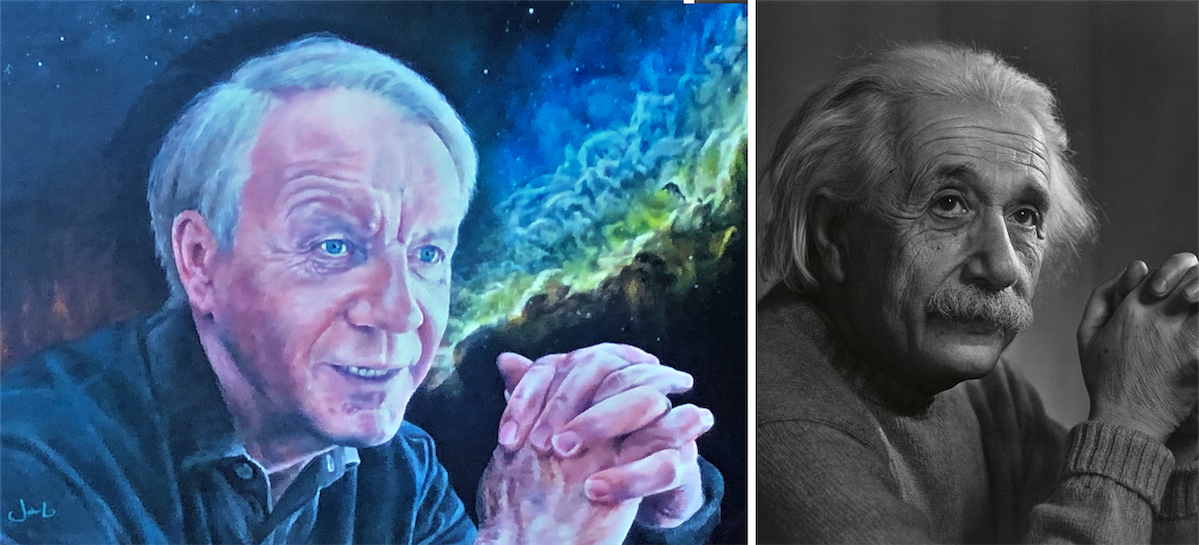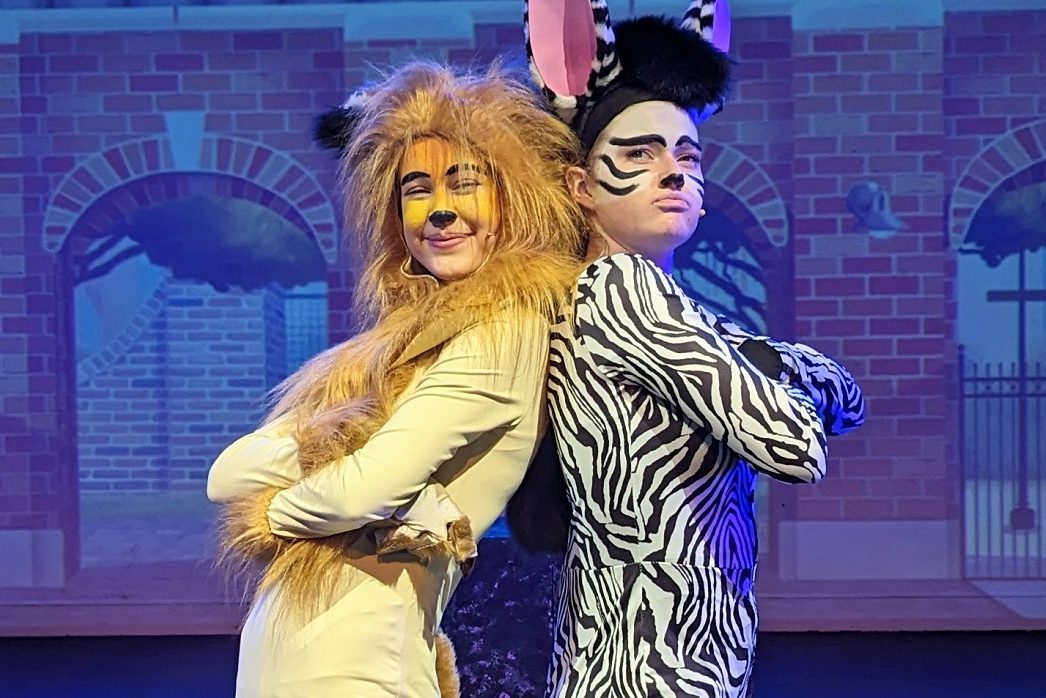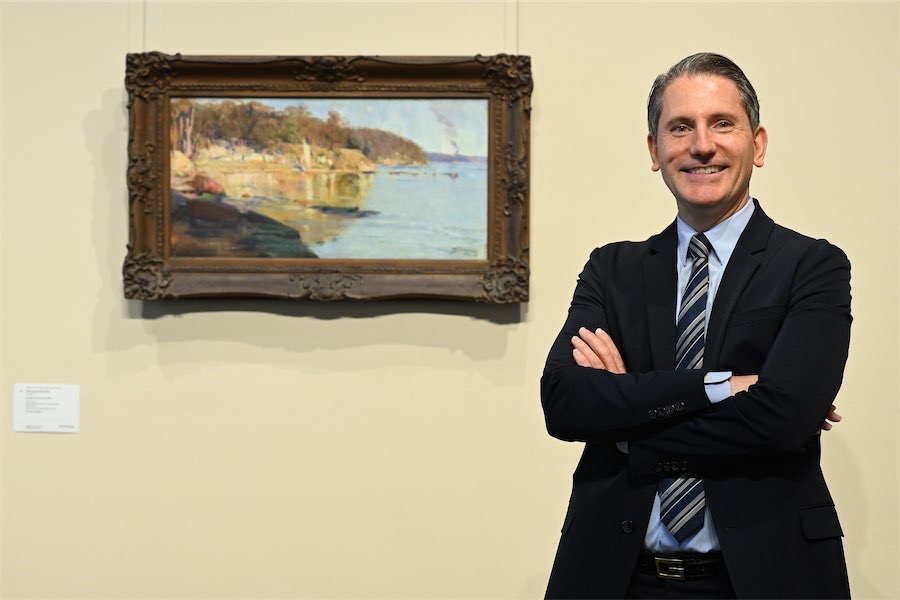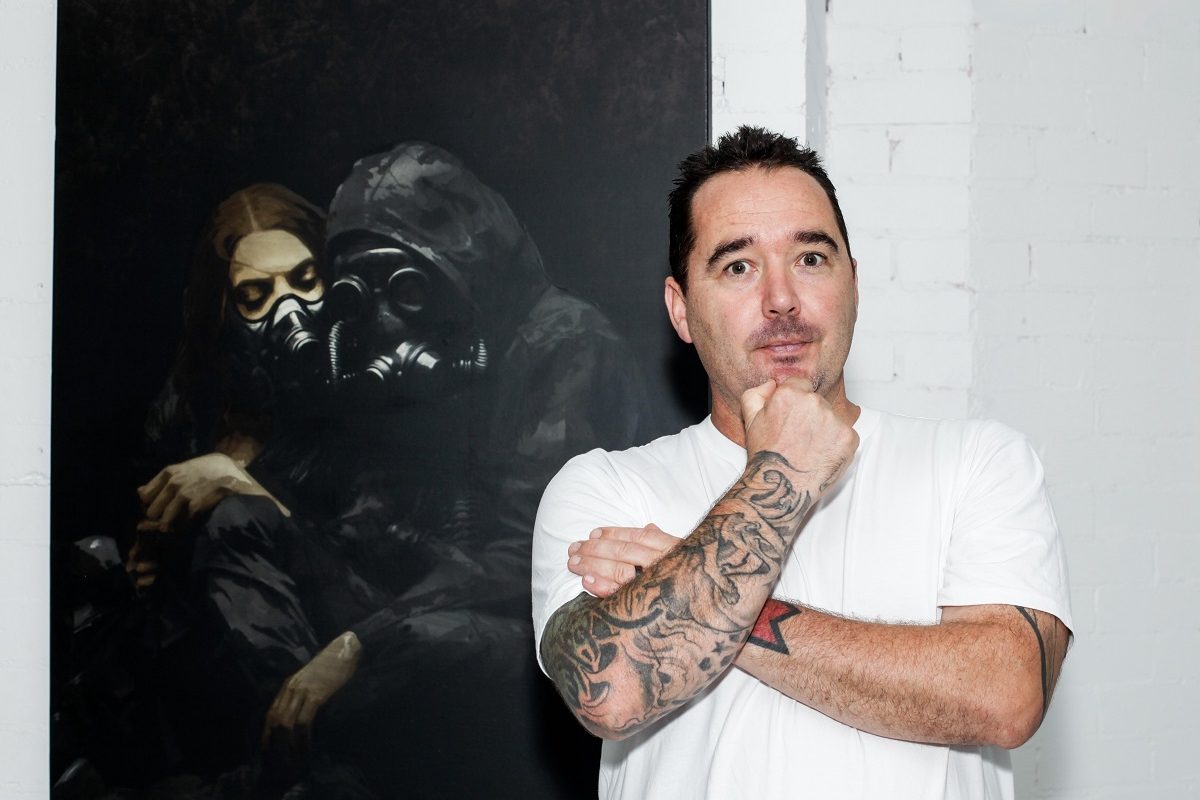
WITH the forced delay of the Archibald, Wynne and Sulman Prizes at the Art Gallery of NSW, Canberra painters have been using the time to put extra finishing touches to their work.
But later in September the winners will be announced and, around the country, artists are on tenterhooks.
To enter that most notorious of prizes, the Archibald, portraits should be of “men or women distinguished in art, letter, science or politics”, but over many years of covering Canberra entries into the prize, a parade of politicians, artists and writers, never before this year have I covered one dealing with a scientist.
John Lamb, of Deakin, retired architect, Masters Games enthusiast, Japan expert, landscape gardener and author, has good reason for being the exception.
The subject of his mixed entry “Re-Conceptualising Relativity” is his own identical twin brother, an Oxford-trained physicist.

Artist John Lamb… challenging Einstein with “an image of intense vision”.
Dr Peter Lamb, of Deakin University, has been busy making himself unpopular with his peers by reconceptualising Einstein’s theories of Special and General Relativity into one that removes the assumption of invisible dark matter in dark energy.
Not an easy subject to capture you would think, but John Lamb, the arty one among five scientific and medically-inclined brothers, has revisited his early years as a cub architect by returning to painting and has, provocatively, referenced Yousuf Karsh’s famous 1948 portrait of Einstein, held in the National Portrait Gallery.
Lamb is adamant that his portrait is neither a copy nor a different head on the same shoulders but one that challenges Einstein himself with an image of what he calls “an image of intense vision, almost a plea for understanding”.
To him, the painting’s background is full of significance, with both the Southern Cross and the Seven Sisters of Pleiades a tribute to country, the centre showing the California nebula cutting through the background and the flames, which could represent our recent bushfires, the burning ambition of a physicist or, John likes to say: “the stake on which an enraged scientific community would have him [Peter] burned.”
An extraordinary lifetime of cultural experiences has informed John’s painting. Halfway through a degree at Melbourne University he joined the then Department of Works as a cadet, went on exchange to Japan, then returned to Australia to do his honours while taking Japanese as an extra subject, with calligraphy thrown in.
He got one of the famous Monbusho scholarships offered by the Japanese Ministry of Education, Culture, Sports, Science and Technology, headed to Waseda University in Tokyo and bumbled through whatever lectures he could understand while getting his language up to speed. He extended his masters to a third year, met his wife Naoko and married there.
Back in Australia, there were stints in Perth and Melbourne, then the department took him to Canberra for the design of ADFA. Lamb found it wanting from the low-energy point of view, which was his area of expertise, but made Canberra his home.
Always incorporating his artistic inclinations in architectural presentations, he became principal project officer to the Joint House Department which had oversight of services of the new Parliament House. He was for a time PA to the the CEO of “Life Be in It” and then joined the Ebara Corporation engineering company in Tokyo, keen for his children to gain some knowledge of their heritage.
Back in Australia he felt like a fish out of water, so took out a Dip.Ed. at the University of Canberra, ran a Kumon learning centre, taught Japanese at Narrabundah College and Orana school and led groups on trips to Japan.
Setting himself the challenge of capturing his brother’s high-energy, querying mind, John took to painting again.
Peter proved a testy subject, showing no confidence in his brother’s ability to sketch, so it was a slow process until John hit on the idea of the Einstein pose, which he sees as “a visual quip”.
He adjusted the height of the hand to make it “almost a prayer”, not the relaxed confidence of the Einstein picture, but rather a way of saying to the scientific community: “Are you listening to me?”
“We reckon he’s on to something,” he says of Peter’s controversial research.
The finalists in the Archibald, Wynne and Sulman Prizes at the Art Gallery of NSW will be announced on September 17 and the winners on September 25.
Who can be trusted?
In a world of spin and confusion, there’s never been a more important time to support independent journalism in Canberra.
If you trust our work online and want to enforce the power of independent voices, I invite you to make a small contribution.
Every dollar of support is invested back into our journalism to help keep citynews.com.au strong and free.
Thank you,
Ian Meikle, editor




Leave a Reply